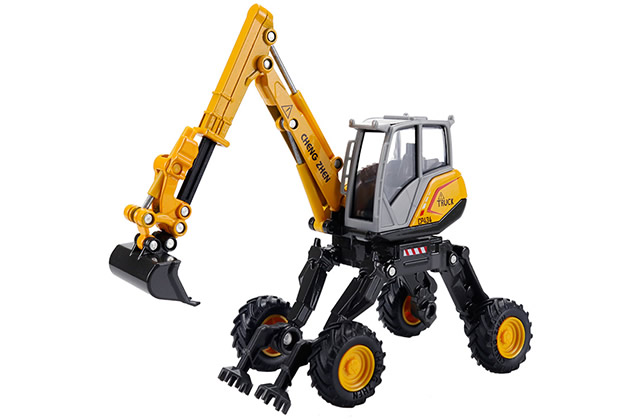1. How to distinguish tower crane models and specifications
Tower crane is a commonly used engineering machinery equipment on construction sites, also called tower crane. It has many models. In the past, our country has Uniform provisions have been made. Although this regulation is still implemented, many tower crane manufacturers still have a set of expression methods. The three common classification methods now are:
1. Standard regulation numbering method
According to ZBJO4008, the model composition of tower cranes in my country is: category group code + form + characteristic code + main parameter code.
Category: Q——(starting); Group: T——(tower); Type: Up-swing self-elevating Z——(self); Fixed type G——(solid); Internal climbing Formula P – (climbing); downward rotation self-elevating type S (lifting); the main parameter is the nominal lifting moment.
Marking examples are as follows:
Fixed tower crane with a nominal lifting torque of 600kNm: QTG600
Self-elevating tower crane with a nominal lifting torque of 1000kNm: QTZ1000
p>
Some tower cranes still use tm as the crane torque measurement unit, so the above three tower crane models are represented as QTG60 and QTZ100 respectively.

2. Enterprise characteristic numbering method
TC (TowerCrane) replaces the category group code, omits the formal characteristic code, and uses the maximum width (m) and maximum lifting weight (kN) Two basic parameter codes replace the main parameter code. Such as TC5610, TC6012, TC6015, TC6517, TC7013, etc.
3. Potain technical numbering method
(1) The first letter of the tower crane model number is the maximum arm length code. The meaning of the code is: F ——50m, H——60m, K——70m, M——80m.
(2) The second character of the tower crane model number is the code for the maximum lifting weight of a single rope. The meaning of the code is: 0——2t, 3——3t.
(3) The third character of the tower crane model number is the maximum lifting weight of the double rope at the maximum amplitude, in kN.
(4) The fourth character of the tower crane model number is the design improvement code.
2. What are the technical parameters of the tower crane?
The technical parameters will also be different depending on the model of the tower crane. Generally, the basic parameters of the tower crane mainly include:
1. Lifting moment
The lifting moment is the main parameter to measure the lifting capacity of the tower crane. When choosing a tower crane, not only the lifting capacity but also the working range should be considered. That is: lifting moment = lifting weight * working range.
2. Lifting capacity
The lifting capacity is calculated as the sum of the weight of the rigging and weights hung on the lifting hook. Regarding the lifting capacity, there are two meanings: one is the lifting capacity at the maximum working range and the maximum rated lifting capacity. When selecting a model, follow its instructions. Since the working range of the luffing jib tower crane has a limited range, if the torque value is divided by the working range, the back-calculated value is not accurate.
3. Working range
The working range is also called the radius of rotation, which is the horizontal distance between the center of the lifting hook and the center line of the tower crane’s rotation (m ), which is determined based on the building size and construction technology requirements.
4. Lifting height
The lifting height is the distance from the center line of the hook to the top surface of the rail at the maximum working range (tire type, crawler type to the ground). The determination of this value is based on the requirements of the building size and construction technology.
5. Track gauge
The track gauge value (m) is determined based on the overall stability and economic effect of the tower crane.
If the website content violates your rights, please contact us to delete it。








